When space is at a premium, gardens can transform from simple courtyards into lush retreats with the right selection of trees. Small gardens can be both functional and aesthetically pleasing when curated with the right trees that showcase beauty, longevity, and low maintenance. Here, we explore a selection of enchanting trees that marry space-saving traits with stunning characteristics, making them perfect for small gardens.
Japanese Maple (Acer palmatum)
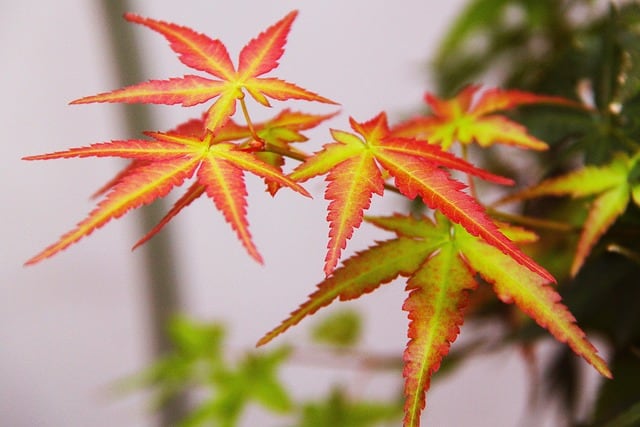
The Japanese Maple is an iconic choice for small gardens and celebrates the beauty of delicately palmed leaves. Its stunning foliage varies in color, from deep burgundy to bright green, inspiring bliss through the seasons. This tree typically stays compact, making it perfect for small gardens where space might be constrained.
In addition to its vibrant leaves, Japanese Maple thrives in partial shade and prefers well-drained soil, giving it an edge in varying light conditions. As a focal point in garden landscapes, it can provide both elegance and serenity while drawing the eye throughout the year. Whether you’re aiming for a modern aesthetic or a zen garden, the Japanese Maple’s elegant structure and graceful branches can easily fit into any small outdoor setting.
Smoke Tree (Cotinus coggygria)
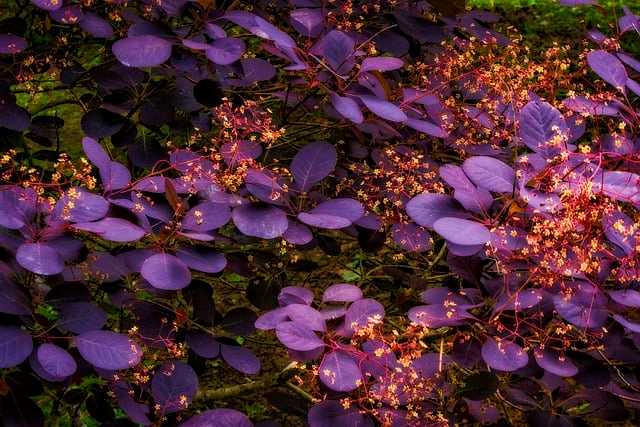
If you’re looking for a unique texture and color in your small garden, consider the Smoke Tree. Its ethereal fluff resembles wisps of smoke during late spring and summer, captivating onlookers. The leaves, which can shimmer in shades of green to purple, further enhance the tree’s visual appeal, especially when sunlight filters through them.
This tree’s drought-resistant nature means it can thrive with minimal care, making it an easy yet impactful addition to any small garden. The Smoke Tree also lends itself well to creative landscaping; you can plant it as a backdrop for lower flowers or even use it as a singular statement piece. By incorporating it into your garden, you’re not just adding a tree—you’re including a conversation starter that showcases the beauty of natural variation.
Olive Tree (Olea europaea ‘Arbequina’)
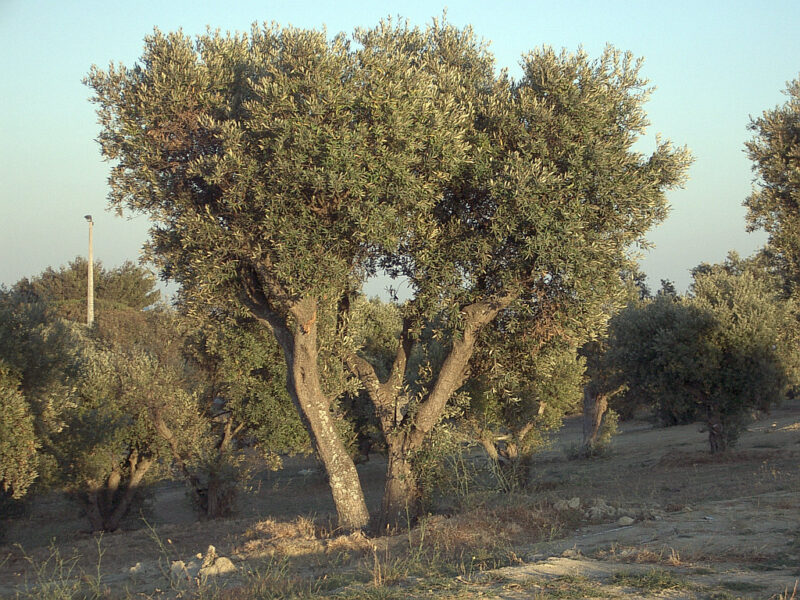
The Arbequina Olive Tree is a stellar choice for small gardens, bringing not only a Mediterranean feel but also potential edibles into your space. Typically dwarfing at heights around 4 to 6 feet, it can be maintained in pots or as a part of your garden display, making it versatile for various garden designs.
Olive trees are known for their silvery-green leaves and twisted trunks, giving them character and charm. They are drought-tolerant, which is a significant advantage in areas with limited rainfall. Plus, they can produce small olives, which can be harvested for oil or enjoyed as gourmet treats. Bringing an olive tree into your garden creates an atmosphere of warmth and calm, evoking sun-drenched European landscapes.
Weeping Cherry (Prunus pendula)
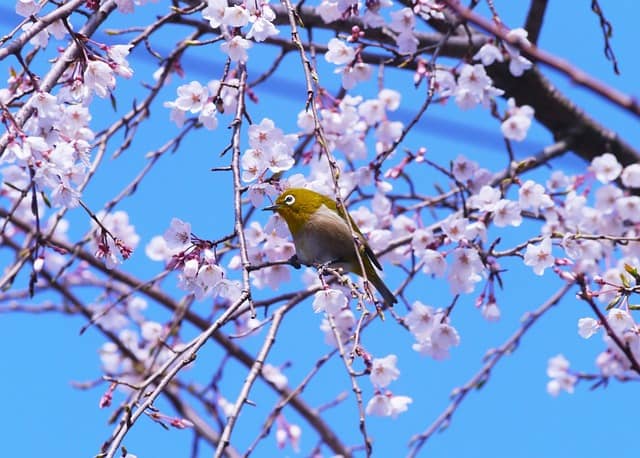
The Weeping Cherry is a mesmerizing tree that enchants gardeners with its graceful, cascading branches. Come spring, it bursts into clouds of pink or white blossoms that signal the arrival of warmer weather, adding a layer of romance to any small yard.
This species typically reaches an ideal height of 15 to 25 feet, making it perfect for smaller settings while still providing a dramatic visual effect. These trees thrive in sunny spots and prefer well-drained soil, happily gracing your garden with energy and vibrancy. If you want to introduce beauty and an element of nostalgia into your outdoor space, the Weeping Cherry can deliver a breathtaking spectacle year after year.
Korean Lilac Tree (Syringa meyeri ‘Palibin’)
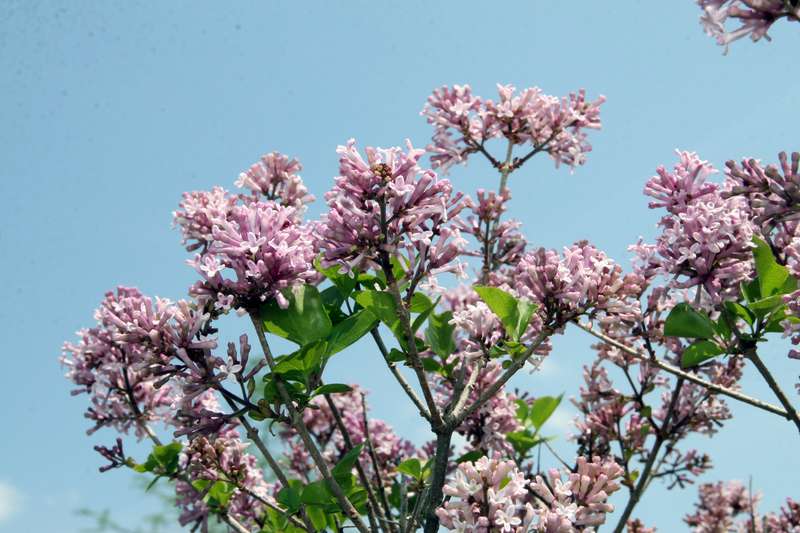
The Korean Lilac is a compact, deciduous tree that perfectly suits small gardens due to its size and stunning displays of fragrant purple flowers in late spring. Growing to a modest height of 4 to 5 feet, its dense foliage can act as both a privacy screen and a delightful accent piece for smaller landscapes.
The lovely, fragrant lilac blooms attract butterflies and pollinators, creating a lively ecosystem in your garden while also producing lovely scents in the air. This tree is also incredibly resilient and adapts well to various soil types, showcasing not just beauty but also practicality. For those seeking a charming tree that never fails to impress during blooming season, the Korean Lilac is a splendid choice.
Amur Maple (Acer ginnala)
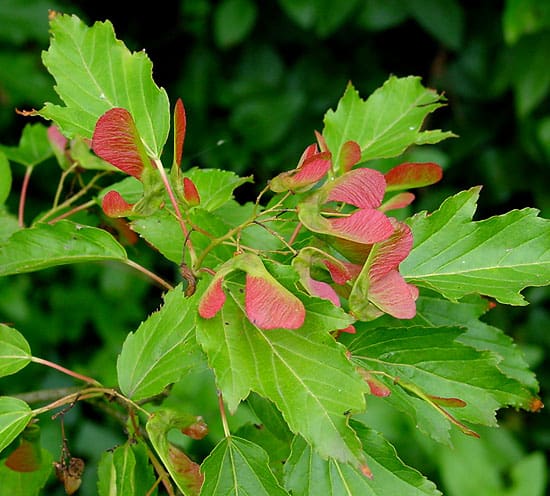
The Amur Maple is a small tree that brings four-season interest to your garden. With the ability to grow between 15 to 20 feet tall, it is ideal for tighter spaces and can even be used effectively in hedges. This maple variant boasts vibrant fall colors that transition from green to radiant red, making it a standout feature as the days get cooler.
Its adaptability also means it can handle a variety of soil types and light conditions. The Amur Maple even attracts birds, providing sustenance in the form of its seeds. If you’re looking for a tree that offers a dynamic visual experience year-round without demanding extensive maintenance, the Amur Maple deserves a place in your small garden.
Fringe Tree (Chionanthus virginicus)
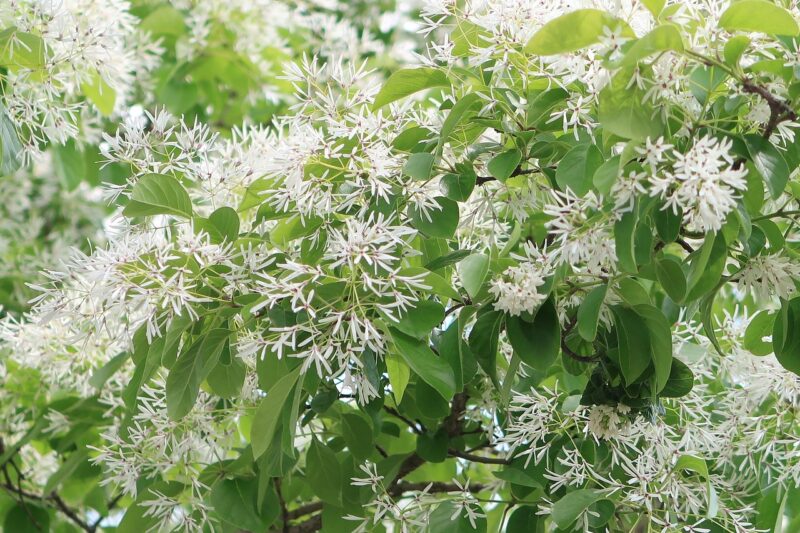
The Fringe Tree is a small, elegant flowering tree that translates beautifully into compact garden spaces. With its fragrant, white, fringed flowers appearing in late spring, it captures attention without overwhelming the senses. Typically growing to a height of 12 to 20 feet, it will not dominate your garden but rather complement its surroundings gracefully.
An added benefit is its impressive fall foliage, showcasing yellows and golds as the leaves transition. The Fringe Tree adapts well to different soil conditions and light scenarios, making it an excellent choice for diverse climates. This tree embodies a soft sophistication that gently draws attention without screaming for it, making it perfect for creating tranquil garden spaces.
Dwarf Magnolia (Magnolia grandiflora ‘Little Gem’)

The Dwarf Magnolia is a beloved tree that brings southern charm to small gardens. This compact tree features glossy green leaves and stunning, cup-shaped white blossoms that emit a sweet fragrance in the late spring. Growing no taller than 15 to 20 feet, it perfectly fits snug spaces while still providing a lush touch to gardens.
Dwarf Magnolias are also celebrated for their resistance to pests and diseases, which is a significant advantage for keen gardeners. Its dense foliage provides an excellent backdrop for other plant varieties and can serve as intrinsic privacy while still allowing sunlight to filter through. If you’re aiming for elegance without excess, a Dwarf Magnolia can create a stunning focal point in your garden.
Japanese Stewartia (Stewartia pseudocamellia)
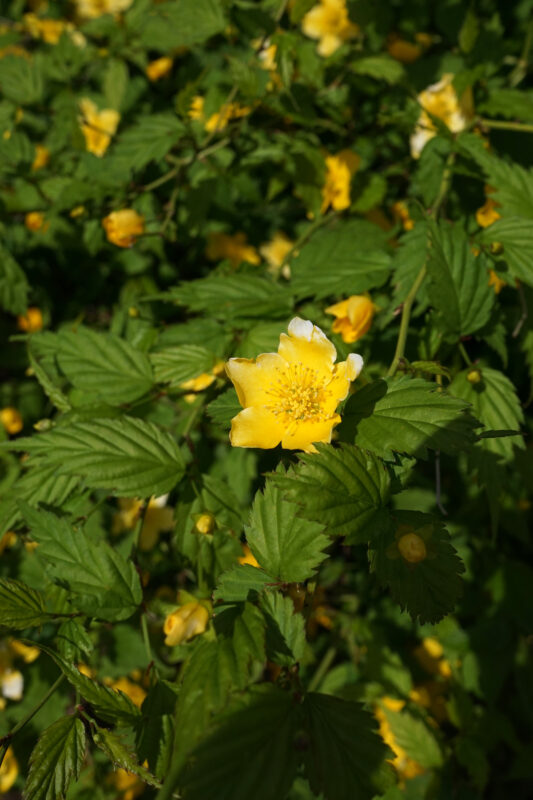
Known for its stunning bark and beautiful flowers, the Japanese Stewartia is a tree that truly shines in small gardens. This slow-grower can reach up to 30 feet but maintains a narrow habit, allowing for effective placement in tighter spots. The creamy white flowers that bloom in the summer resemble camellias, offering an unexpected treat in the garden.
Additionally, the tree boasts an attractive, exfoliating bark that adds interest throughout the year even when not in bloom. Its adaptability makes it suited for various soil types, and it prefers partial shade, making it versatile in placement. The Japanese Stewartia is a choice for those who appreciate trees with subtle yet exquisite beauty.
Redbud (Cercis canadensis ‘Ace of Hearts’)
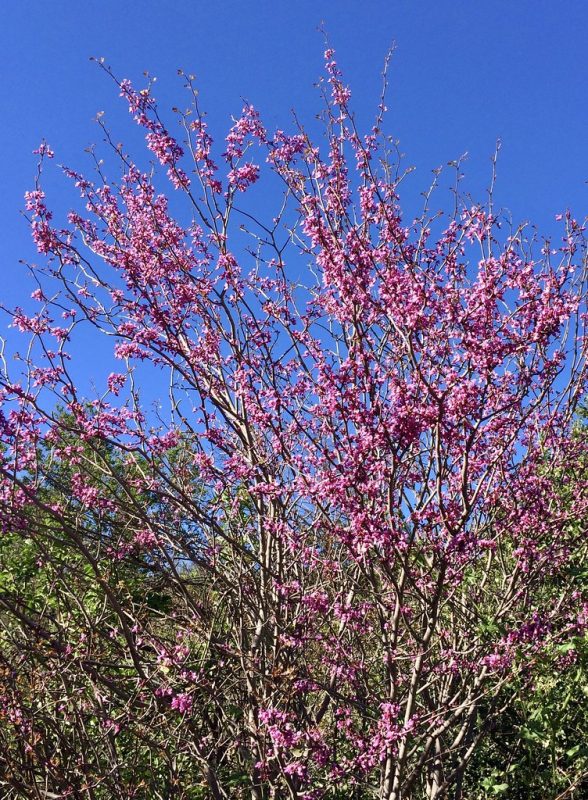
The Redbud tree is a small, ornamental tree that brings vivid splashes of color with its unmistakable pink flowers in early spring. Reaching around 4 to 5 feet in height, the ‘Ace of Hearts’ cultivar offers a perfect fit for minimal gardens, enhancing spaces where larger trees would overwhelm.
Beyond its profound color, the tree’s heart-shaped leaves provide a unique texture and visual appeal throughout the growing season. The Redbud is also welcoming to wildlife, attracting bees and butterflies, which offer life and movement in small gardens. For those wanting to embrace a vibrantly alive garden, the Redbud is a charming addition worth considering.
Crape Myrtle (Lagerstroemia ‘Dynamite’)
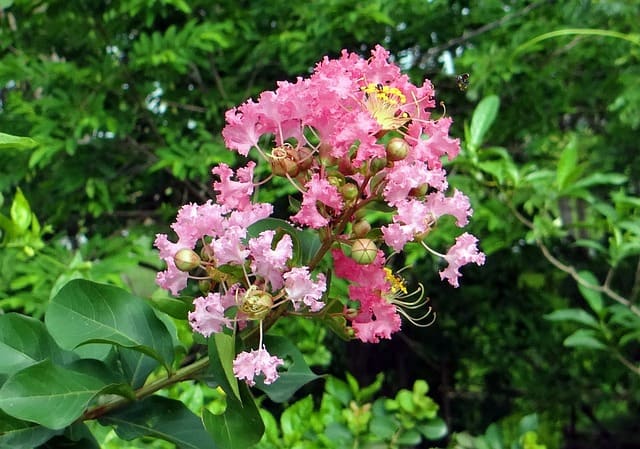
If you’re looking for summer blooms and stunning fall color, the Crape Myrtle ‘Dynamite’ is an exceptional candidate for smaller gardens. This compact cultivar reaches around 10 to 15 feet in height, displaying vibrant crimson flowers that continuously bloom throughout the summer.
In addition to its flowers, Crape Myrtle leaves transform into radiant hues of orange and red in fall, providing sustained aesthetic interest. Adaptable to different soil types and relatively drought-resistant, it makes an excellent choice for gardeners in warmer climates. The Crape Myrtle’s charming flowers and colorful foliage will brighten up any small garden setting with lively energy.
Serviceberry (Amelanchier ‘Autumn Brilliance’)
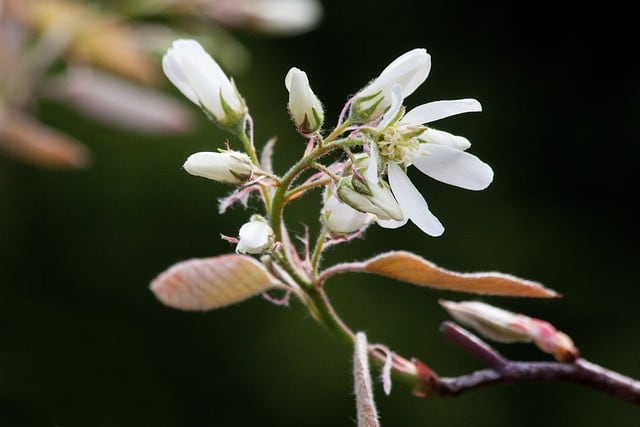
The Serviceberry, known as Juneberry, is a delightful decorative tree that offers year-round interest. This condensed plant typically reaches heights of 15 to 25 feet, making it well-suited for confined spaces while attracting a variety of pollinators.
In early spring, it displays white blossoms that are followed by edible berries that can be enjoyed fresh or made into jams and jellies. The tree’s vibrant fall foliage consists of yellows to reds—an impressive finale to the growing season. Serviceberry trees thrive in various soil conditions and are tolerant of urban environments, making them perfect for small city gardens needing character and charm.
Dwarf Japanese Snowbell (Styrax japonicus ‘Snowcone’)
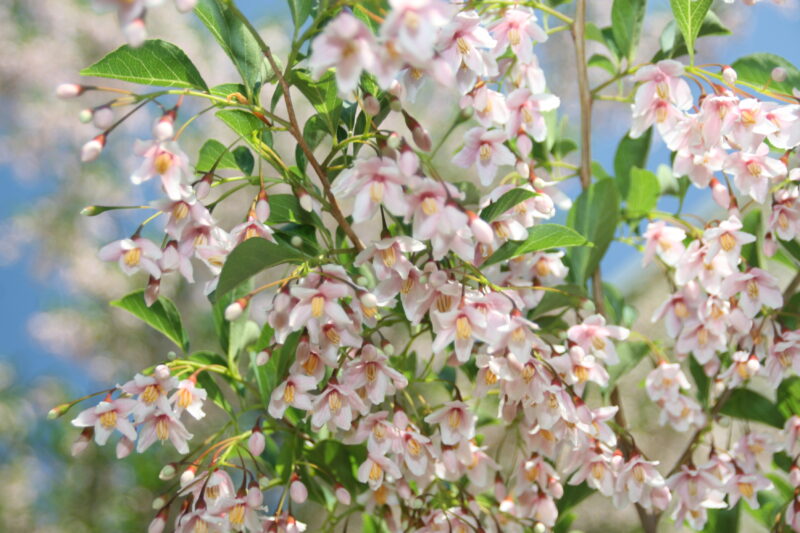
The Dwarf Japanese Snowbell is an enchanting addition to small gardens due to its compact growth and heavenly fragrance. This tree reaches a height of around 4 to 6 feet, making it suitable for tight spaces while still providing a lush feel.
Blooming in late spring, it produces delicate, bell-shaped white flowers that create a lovely contrast to its dark green foliage. It’s a wonderful tree for a shaded area, bringing beauty and life to difficult planting locations. With this charming tree, you can create a serene nook in your garden that invites peaceful contemplation and connection with nature.
Golden Chain Tree (Laburnum x watereri ‘Vossii’)
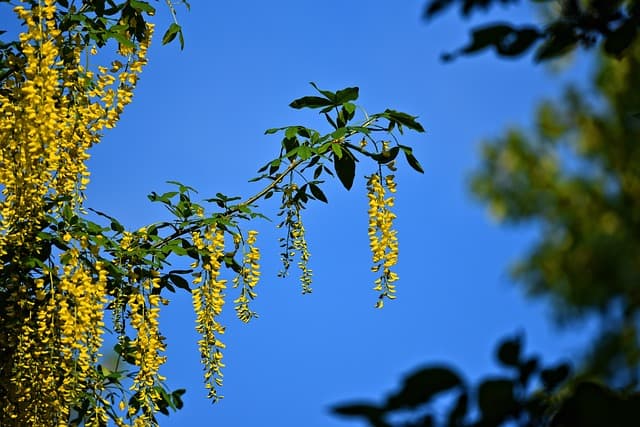
For a touch of elegance and drama, the Golden Chain Tree deserves a place in any small garden. Reaching heights of 15 to 25 feet, its cascading, bright yellow flowers hang in long clusters, creating a stunning visual display in late spring.
This tree prefers full sun and well-drained soil, thriving in spaces where it can drape its blossoms down elegantly. While beautiful, it’s essential to note that all parts of the tree are toxic; hence, keep it away from small children and pets. Still, when managed correctly, this tree can add a lush, romantic atmosphere, transforming smaller gardens into captivating retreats.
Paperbark Maple (Acer griseum)
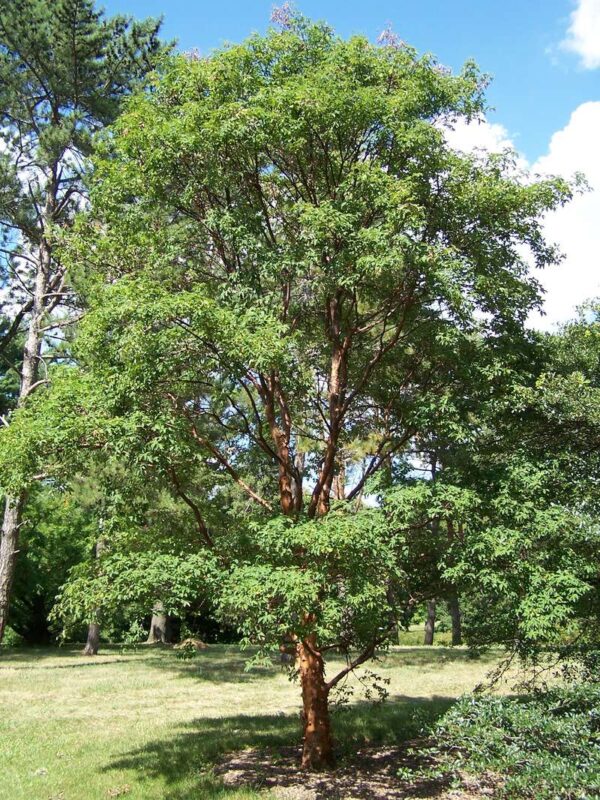
The Paperbark Maple is revered for its stunning, cinnamon-colored bark and seasonal transformations that captivate the eye. Typically growing up to 20 to 30 feet, its slender shape allows it to thrive in smaller gardens without overwhelming the space.
In autumn, the leaves don vibrant shades of orange and red, further enhancing its multi-seasonal interest. With a preference for well-drained soil and partial shade, this maple is adaptable and generally low-maintenance. By adding a Paperbark Maple to your garden, you’re not just planting a tree but incorporating an element that tells a story of nature’s exquisite artistry.
Dwarf Ginkgo (Ginkgo biloba ‘Jade Butterfly’)
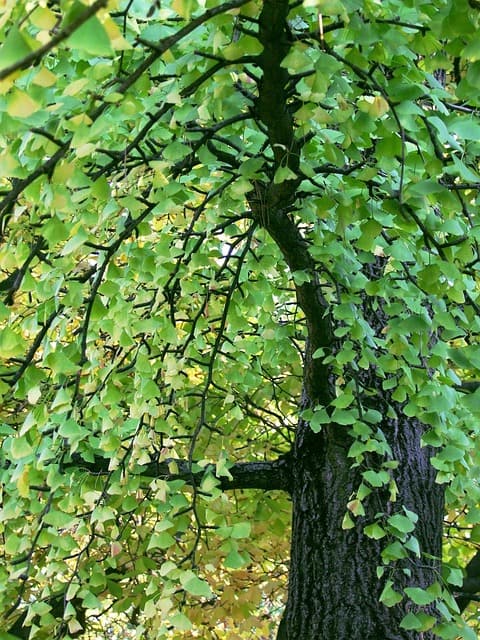
The Dwarf Ginkgo is a splendid option for small gardens, embodying unique beauty and resilience. Maximally reaching around 6 to 10 feet, this tree boasts fan-shaped leaves that provide a delightful texture. The ‘Jade Butterfly’ variant maintains a graceful, bushy form that fits nicely amid smaller landscapes.
Ginkgo trees are known for their stunning golden fall colors and their hardy nature, able to tolerate various conditions, including pollution. While the male variety produces no fruit, it offers exceptional ornamental appeal. Adding a Dwarf Ginkgo to your garden can introduce an exotic touch while ensuring long-term growth and sustainability.
Eastern Redbud (Cercis canadensis ‘Ruby Falls’)
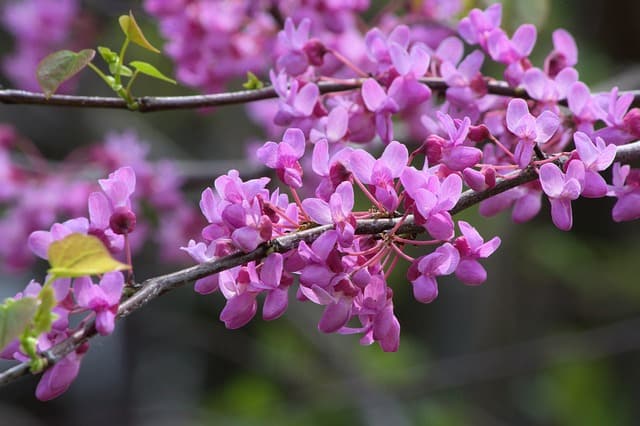
The Eastern Redbud ‘Ruby Falls’ is a breathtaking weeping tree that introduces a unique silhouette to small gardens. Growing around 5 to 7 feet in height, this tree provides a dense canopy of heart-shaped leaves and charming purple flowers that bloom in early spring.
Its cascading branches offer a beautiful and soft appearance that can beauty landscapes. The ‘Ruby Falls’ variety thrives in sunny to partially shaded areas and can adapt to different soil types effortlessly. If you want a delightful focal point or an enchanting backdrop for your garden, the Eastern Redbud can elegantly fulfill that role.
Lavender Twist Weeping Redbud (Cercis canadensis ‘Covey’)
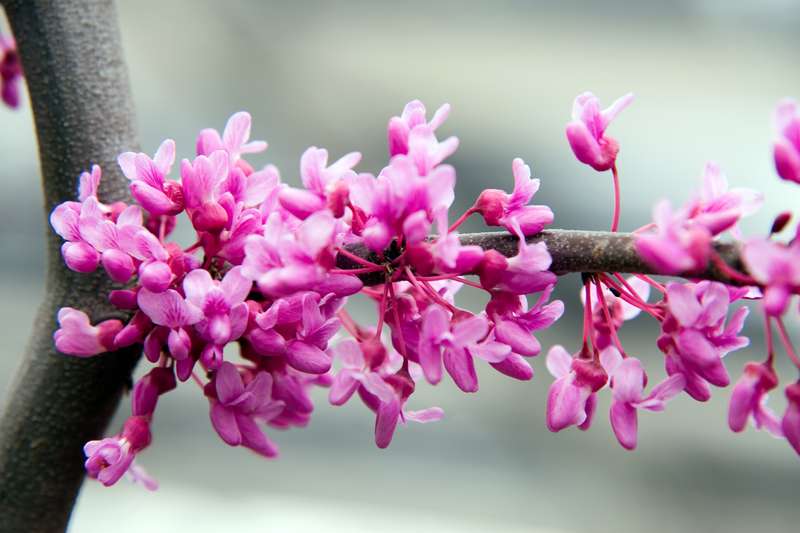
The Lavender Twist Weeping Redbud is another variant that offers exquisite beauty with unique forms. This tree, often reaching heights of 5 to 6 feet, features stunning lavender-pink flowers that herald the arrival of spring, followed by cascading branches that create a magical effect.
Its compact size allows it to fit snugly into small yards while providing a beautiful focal point. The soft color of its blossoms makes it ideal for creating a romantic garden atmosphere. Additionally, they adapt well to varying light conditions, providing you with versatility in placement. A Lavender Twist Weeping Redbud can mesmerize guests and create an inviting ambiance in your outdoor haven.
Dwarf Weeping Crabapple (Malus ‘Spring Rain’)

The Dwarf Weeping Crabapple is a stunning addition to small gardens, offering exceptional beauty and culinary potential. This tree typically stays around 5 to 6 feet tall, making it an ideal choice for tight quarters while showcasing lovely cascading branches adorned with pink flowers in spring.
As the flowers mature, they give way to small, ornamental apples that attract various wildlife to your garden. The Crabapple’s vibrance and adaptability make it an excellent centerpiece for patios, courtyards, or as a focal point in your landscape. If you desire a flowering tree that adds charm, color, and life, the Dwarf Weeping Crabapple will surely meet your expectations.





